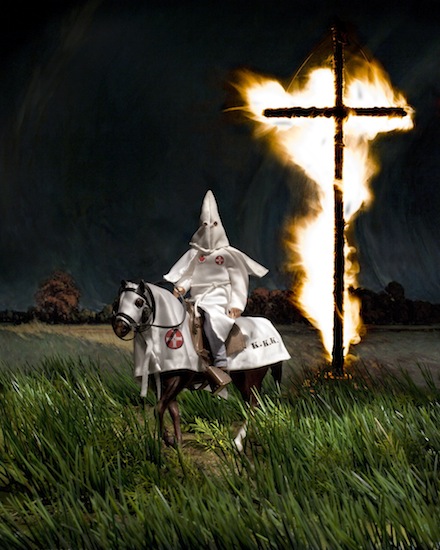Diana Thorneycroft is a Canadian artist who re-imagines and creates dioramas of Canadian history. I love her work as it is not only brilliant in its conception but is also simultaneously hilarious and heartbreaking. Her work is like laughing as the love of your life stabs you to death.
Her series The Group of Seven Awkward Moments are little gems of wit and Canadian culture each staged in front of a different Group of Seven Painting. She describes her work as follows:
It is through the use of the collective's iconic northern landscapes,
which have come to symbolize Canada as a nation, combined with scenes of
accidents, disasters, and bad weather that gives the work its edge. By
pairing the tranquility of traditional landscape painting with black
humour, the work conjures up topical and universally familiar landscapes
fraught with anxiety and contradictions.
Her series that follwed The awkward moments was much darker and effectively opens the skeletal closet of the Canadian collective consciousness. The content for A People's History relates directly to a current or historical event and exposes the dark evils that lurk at the periphery of our history books. I may have been much more interested in learning history while in school if discussions about the issues found in Thorneycroft's work were introduced and even more interested if we'd udes her work to initiate discussion. While it is fine to read about the "facts" as we all know history is written by the victor and therefore many stories go unrecorded. She describes the ongoing series:
With some of the research however, it became apparent the word
“awkward” was not applicable. The horrors that took place in First
Nations residential schools and orphanages like Mount St. Cashel,
Newfoundland, speak of atrocities that eradicate all humour.
I am in the process of completing the “atrocities” and working
towards an exhibition entitled “A People’s History”. The series is about
horrific events committed in Canada against our most vulnerable
citizens; the disadvantaged, the uneducated and the young. At the time
of each violation the victims were either ignored, disbelieved, or
considered expendable.
Thorneycroft's work is an interesting form of documentary, capturing imagined events with dolls as if recreating the events for a therapist. Perhaps her work is a therapeutic form in which we all can participate as each of these events leaves an indelible impression on us as Canadians and how we see ourselves.

















No comments:
Post a Comment
Note: Only a member of this blog may post a comment.